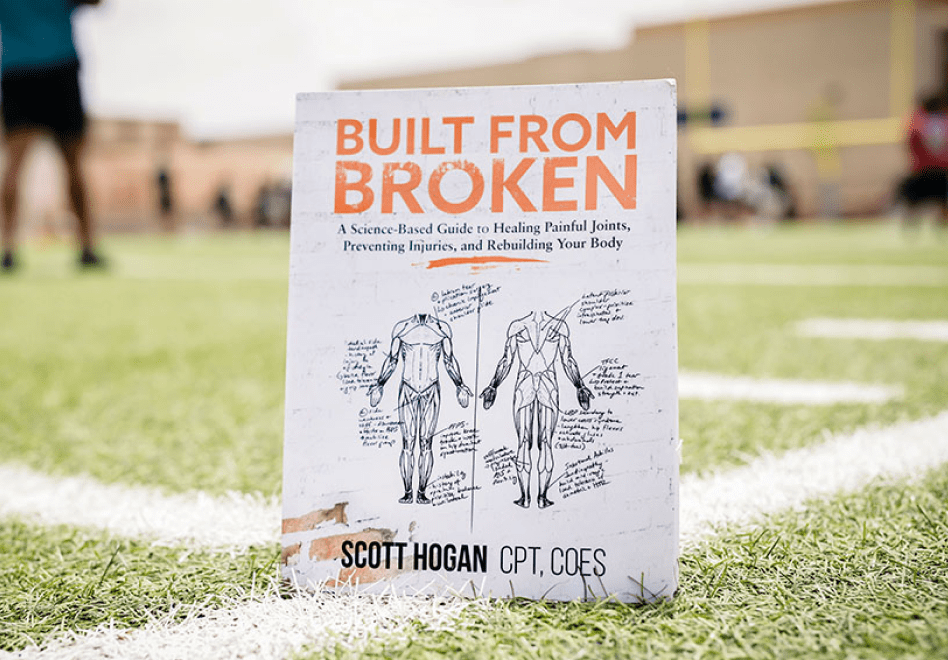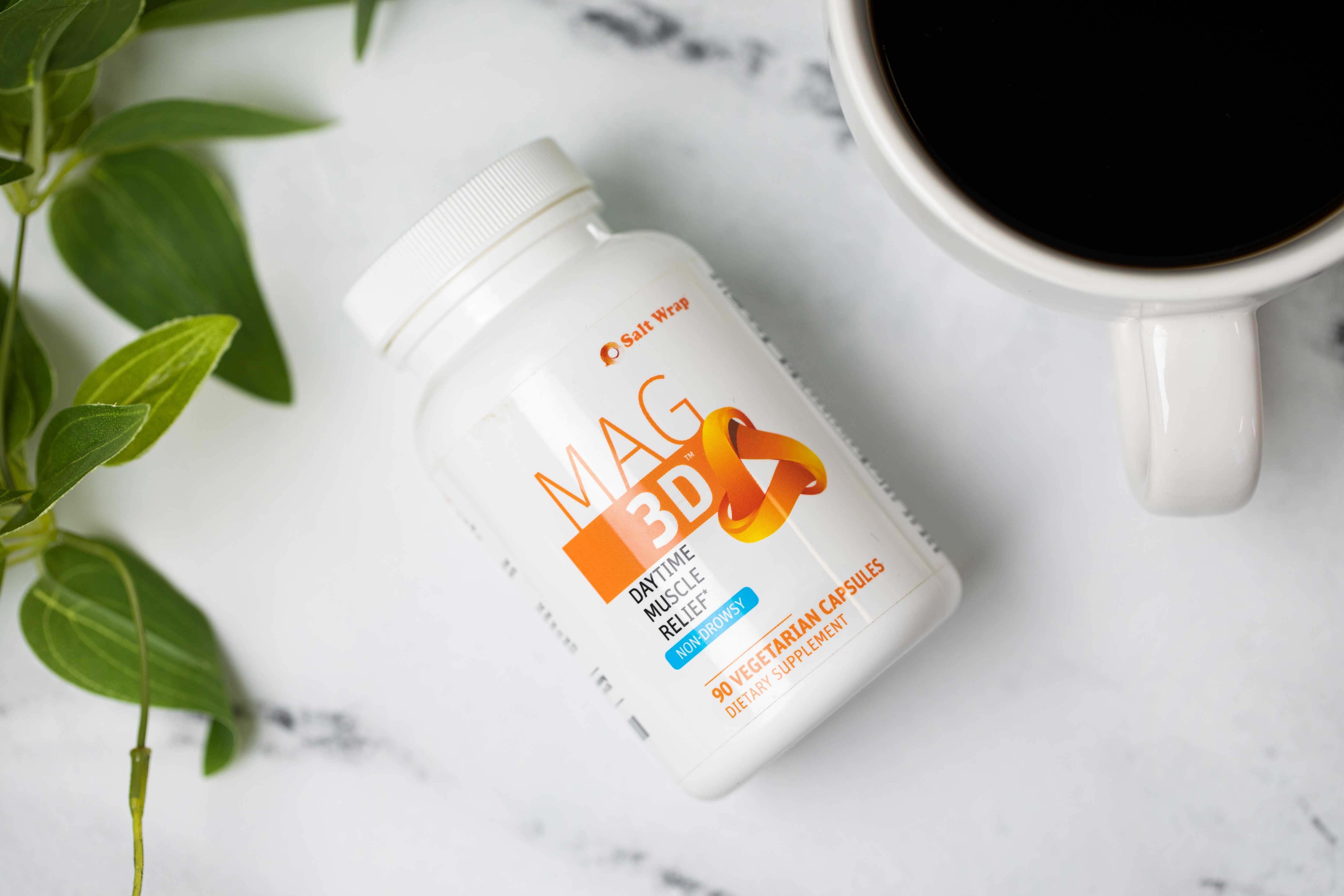
Be built (to last).
The right supplements can help you recover naturally and build a resilient body.

Supplement Quiz
Take this short quiz to discover the perfect supplements for your needs and goals.
About SaltWrap

Built from Broken
Get the best-selling book from SaltWrap founder, Scott Hogan, and start rebuilding today.
6 Signs of Magnesium Deficiency (And How to Fix It)
By Joe Zagami
Magnesium is one of the most important nutrients athletes –or any active person – should pay attention to. It’s nearly impossible to optimize athletic performance if you aren’t giving your body the magnesium it needs to work at its best.
The problem is that if you aren’t careful, magnesium deficiency is easy to fall into. Worse yet, the signs of a magnesium deficiency can be hard to spot. Many of them easily fly under the radar, and they won’t resolve until the problem is corrected.
In this article, we’re going to show you six signs of magnesium deficiency – and how to correct it. (Spoiler: food isn’t always the best solution.)
But first, let’s get everyone up to speed on why optimal magnesium levels are essential for athletic performance and overall health.

Magnesium 101: Why Is It So Important?
Let’s start with the basics. Magnesium is a mineral. In fact, it’s the fourth most abundant mineral in the human body.
Magnesium helps regulate more than 600 enzymatic processes. It also influences how the body uses other important nutrients, like vitamin D and calcium. (This also makes it critical to bone health – more on that in a moment.)1
Just about every facet of human health relies on magnesium to some degree:2
• Muscle, nerve, organ, and bone function
• Digestion and nutrient utilization
• Circadian rhythm and sleep
• Hormonal balance
• Brain function and mood
In short, magnesium is essential for maintaining overall health. But getting adequate – let alone optimal – amounts of it is becoming increasingly difficult for many.
Research shows that more than half of U.S. adults are likely not getting enough magnesium.3 But mineral depletion in the soil that grows our crops – the food we eat – while important, is just one piece of the bigger “magnesium puzzle.”
There are many reasons why someone might be deficient in magnesium.
What Causes Magnesium Deficiency?
First, let’s define what it means to be deficient.
In most cases, hypomagnesemia (the scary way of saying “magnesium deficiency”) is diagnosed via a blood test. Anything below 1.46 mg/dL is generally considered deficient.4
Yet research shows that people with levels around 1.82 mg/dL – about 25% higher than the standard cutoff – are still likely to be deficient.
As you might imagine, this can be very problematic.
Let’s suppose someone’s serum magnesium levels are 1.75 mg/dL. One healthcare practitioner might tell them they’re doing great. But another might tell them they’re deficient.
And just to further complicate things, another health professional might rightly point out that since only about 0.3% of the body’s total magnesium is found in blood, serum concentrations are not reliable markers of magnesium status.
(By contrast, some 60% of magnesium resides in bones and teeth.)5
One thing every healthcare practitioner can hopefully agree on is that regardless of the exact criteria, low blood levels of magnesium are only a symptom – not the cause – of hypomagnesemia.
So, what causes magnesium deficiency?
Before we look at that, it’s important to consider that magnesium gets moved around a lot.
For instance, when magnesium levels are low, the body will pull magnesium from bones to pick up the slack. (Which could set up major bone health issues down the line.)
Yet, when magnesium levels are normal, we can excrete more than half of what we get from food through urine.6
In other words, optimizing your body’s magnesium levels is more about how much you absorb – and utilize – rather than how much you ingest.
And if that’s true, then a magnesium deficiency is likely due (at least in part) to suboptimal magnesium absorption.
Ok, so what causes magnesium deficiency? Here are a few of the most common culprits:7
• Poor diet (i.e. low intake of high-quality, nutrient-dense whole foods)
• Digestive and/or kidney problems (i.e. suboptimal absorption and/or utilization)
• Long-term alcohol abuse
• Vitamin D deficiency (and nearly half of American adults are in this category)8
But if blood tests aren’t great indicators of your actual magnesium status, what’s the best way to know if you need more of it?
In this case, listening to your body may be best.
6 Signs of Magnesium Deficiency
Here are six of the most common – yet easy to miss – signs of magnesium deficiency:9
• Muscle weakness
• Fatigue
• Nausea or vomiting
• Reduced appetite
• Tingling sensations or numbness
• Muscle cramps
There are no smoking gun symptoms when it comes to magnesium deficiency. But if you’re experiencing three or more of these symptoms for more than a day or two, there’s a good chance increasing your magnesium intake could help.
So, what’s the best way to do this?
The Best Way to Get More Magnesium
One of the easiest ways to optimize magnesium intake is by avoiding the things that rob your body of magnesium. Certain medications, sodas, coffee, and alcohol are all thought to be common culprits.
Of course, you can get magnesium from food. Even with depleted soil in the equation, your best bet for maximum magnesium content is still pumpkin seeds or chia seeds. Almonds, cashews, and spinach aren’t bad choices either.10
But if you aren’t eating these foods every day, you’re an athlete, or if you’re experiencing any of the above symptoms, then you could likely benefit from a magnesium supplement.
At SaltWrap, we have two natural-based solutions for anyone looking to optimize their magnesium levels.
Mag R&R™ is formulated to help put an end to nighttime leg and muscle cramps – while supporting maximum recovery and relaxation.
It delivers 162 mg of magnesium glycinate, which is highly bioavailable and absorbable. That's why Mag R&R™ is the perfect solution for athletes, or anyone else who refuses to leave anything to chance when it comes to muscle recovery.
Click the button below to learn more about Mag R&R™.
Mag 3D™ is the perfect solution for daytime muscle, nerve, and energy support. Each serving contains 200 mg of magnesium citrate to deliver non-drowsy muscle relief, so you can win the day.
Click the button below to learn more about Mag 3D™.
-
https://health.unl.edu/8-magnesium-deficiency-symptoms-and-9-high-magnesium-foods
-
https://lpi.oregonstate.edu/mic/micronutrient-inadequacies/overview
-
https://my.clevelandclinic.org/health/diseases/23264-hypomagnesemia
-
https://ods.od.nih.gov/factsheets/Magnesium-HealthProfessional/
-
https://ods.od.nih.gov/factsheets/Magnesium-HealthProfessional
Founder: Scott Hogan

I created SaltWrap to bring together the most practical ideas in therapeutic sports nutrition, corrective exercise, and functional fitness — with the goal of keeping you (and myself) strong, mobile, and built to last.
I've worked as an A.C.E. Certified Personal Trainer, Orthopedic Exercise Specialist, and nutritional supplement formulator.
But more importantly — I've spent most of my life battling injuries, joint pain, and just being plain beat up. So I know what it's like to struggle toward fitness goals.
SaltWrap is here to push you through injuries, setbacks and perceived physical limitations. To a place beyond what you think you're capable of. Sign up here to stay in the loop.
Learn more about my best-selling injury prevention and recovery book, Built from Broken.








